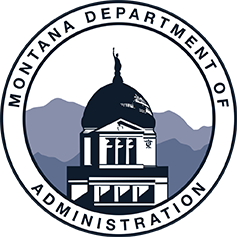State of Montana Information Technology Strategic Plans
Background on State IT Strategic Plan
The State's Information Technology Strategic Plan serves as the voice of the Montana Information Technology Act (MITA), 2-17-523 MCA, and documents the strategies of the State Chief Information Officer (CIO). The plan is reviewed biennially to reflect new state IT goals and objectives. It provides a framework and guidance for the development of individual state agency IT plans. The strategic plan is grounded in the principles and values established by MITA.
Strategic Plans
Agencies' Information Technology Plans
The Montana Information Technology Act (MITA), section 2-17-505, MCA, requires all state agencies to develop and maintain an IT plan that establishes goals and objectives regarding the use of IT; identifies requested funding for major IT projects; and supports the broader goals identified in the state's IT plan. Click the accordion below to view individual agency plans by year.
- Administration
- Agriculture
- Arts Council
- Auditor
- Board of Public Education
- Commerce
- Commissioner of Higher Education
- Commissioner of Political Practice
- Corrections
- Environmental Quality
- Fish, Wildlife & Parks
- Governor's Office
- Historical Society
- Justice
- Labor & Industry
- Livestock
- Lottery
- Military Affairs
- Montana Public Employees Retirement Administration
- Natural Resources & Conservation
- Office of Public Instruction
- Office of the State Public Defender
- Public Health & Human Services
- Public Service Commission
- Revenue
- Secretary of State
- State Fund
- State Library
- Teachers Retirement System
- Transportation
- Administration
- Agriculture
- Arts Council
- Auditor
- Board of Public Education
- Commerce
- Commissioner of Higher Education
- Commissioner of Political Practice
- Corrections
- Environmental Quality
- Fish, Wildlife & Parks
- Governor's Office
- Historical Society
- Justice
- Labor & Industry
- Livestock
- Lottery
- Military Affairs
- Montana Public Employees Retirement Administration
- Natural Resources & Conservation
- Office of Public Instruction
- Office of the State Public Defender
- Public Health & Human Services
- Public Service Commission
- Revenue
- Secretary of State
- State Fund
- State Library
- Teachers Retirement System
- Transportation
- Administration
- Agriculture
- Arts Council
- Auditor
- Board of Public Education
- Commerce
- Commissioner of Higher Education
- Commissioner of Political Practice
- Corrections
- Environmental Quality
- Fish, Wildlife & Parks
- Governor's Office
- Historical Society
- Justice
- Labor & Industry
- Livestock
- Lottery
- Military Affairs
- Montana Public Employees Retirement Administration
- Natural Resources & Conservation
- Office of Public Instruction
- Office of the State Public Defender
- Public Health & Human Services
- Public Service Commission
- Revenue
- Secretary of State
- State Fund
- State Library
- Teachers Retirement System
- Transportation
